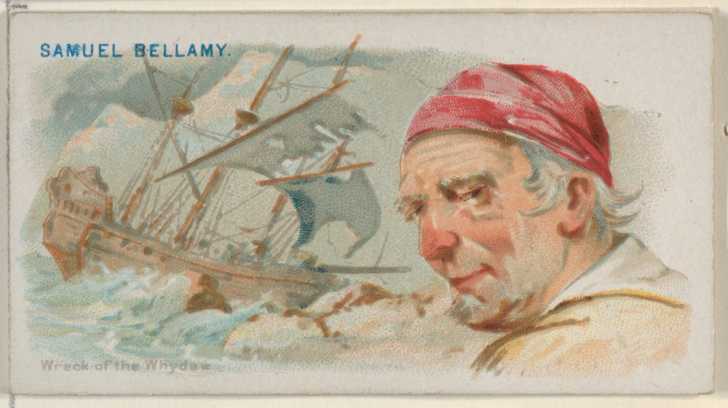Pirate Skeletons from 1717 Found in Legendary Shipwreck
The bones of at least 6 men have been found near Cape Cod.
Between the 1500s and the 1700s the transport of immense holds of gold, silver, and other resources exported from the colonies back to Europe led to what is now known as the Golden Age of piracy. Any man who learned to sail could easily become a pirate and the best pirates amassed huge fortunes and dedicated followings among their crews. One infamous pirate ship was the Whydah Gally, which sunk in 1717 near Cape Cod. Recent finds in the past few decades have unearthed the ship’s bell, some of the gold that was on board when she went down, and now 6 pirate skeletons have been discovered as well.

The Whydah Gally had originally been used as a slave ship, carrying African men, women, and children across the Atlantic to be sold to the highest bidder. But, the ship was also designed to hold cargo and passengers as well, making it a sort of all-purpose vessel. It was built by one of the most famous slave traders of his day, Sir Humphrey Morice, an English nobleman who inherited a large shipping operation.
This ship had as her captain Samuel “Black Sam” Bellamy who pirated the ship from her original crew in February of 1717. According to Forbes magazine Black Sam was the highest-earning pirate ever to have lived, collecting the spoils from dozens of ships and making around $120M in today’s money.
Black Sam was said to be relatively generous for a pirate, often acquiring vessels with no loss of life due to his brilliant strategical planning. He was also known to give the crews of the ships he was stealing to have whatever smaller craft he was using, instead of just killing them. He gained a reputation among his crew as a sort of Robin Hood of the pirate world. And, former slaves made up a fair number of Black Sam’s pirate crew.

Black Sam’s career as a pirate was short-lived -only 1 year- because he came to an end when the Whydah Gally wrecked near Cape Cod on April 26th, 1717. Just 2 of the nearly 150 crew survived, with a full cargo of gold and other valuables landing at the bottom of the ocean.
The first signs of the ship were uncovered in 1984 when the ships’s bell was discovered by Barry Clifford, a shipwreck explorer and maritime archaeologist. Since then a fair amount of gold has also been brought up to the surface. This was the first verified pirate shipwreck to be uncovered and Clifford went on to open the Whydah Pirate Museum in Yarmouth, Massachusetts, to showcase the finds. The contents of the ship were scattered along the sea floor when the ship was violently turned upside down in the shipwrecking storm. Because of this, it has made finding all the aspects of the ship very difficult over the years.

Now, the bones of at least 6 skeletons have been recovered as well, but it will take time to study each sets of bones. Information on the skeletons is scant at this stage, as it could take years to identify the remains. Clifford said that the plan is to find the families of the dead sailors. He said, “The hope is that these pirate skeletons can be united with their relatives, “We hope that modern, cutting-edge technology will help us identify these pirates and reunite them with any descendants who could be out there.”
If successful then Clifford would effectively be connecting the family members to their ancestors across centuries of history. In the case of Black Sam they already have a DNA sample from a known relative, which will be used in this case to test for relations among the remains found at the shipwreck.
Along with the bones researchers also found gold, silver, and a pistol from when the Whydah Gally was sunk.
Find out more about this incredible shipwreck in the video below.
SKM: below-content placeholderWhizzco for DOT

